There’s a saying in Portugal – “Porto works, Braga Prays, Coimbra Studies and Lisbon gets all the money”. As you can guess, Porto is traditionally a working class, port/trading city and is not one that’d typically come up when you’re talking about Portugal with your mates. It’s situated in the north of the country, and has its own unique character that really sets it apart from its more well known southern rival. It was built on two VERY STEEP hills, each with a unique history (more on that later) and a river that has seen more alcohol ploughed up and down it than the Mississippi.
Things to See and Do
For a city that sits in the shadows of Lisbon and is frequently neglected by travellers, Porto has a lot to offer in just 48 hours. This UNESCO World Heritage listed city is abound with architectural gems, great wine and cobbled stoned, colourful winding lane ways that descend down steep inclines to the shores of the River Douro.
Porto Cathedral
Built in 3 separate periods of time across the last 10 centuries, Porto cathedral sits high above the city on the highest hill. Construction of the main part began in the 12th century, and bits were added on to the flanks in the 15th and 18th centuries. As you walk around you can clearly see the different architectural and artistic influences.
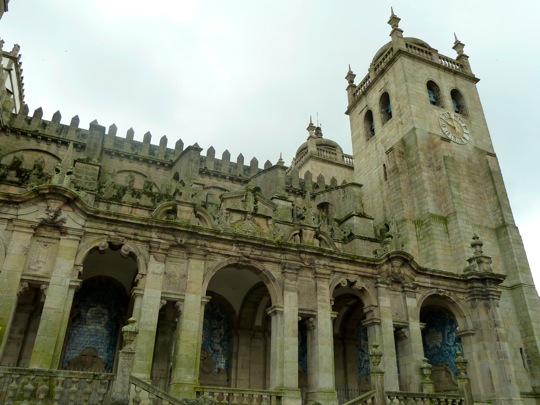
As you descend the hill and into the bustling main streets of Porto, you can spot out other churches perched along the way. Each of these churches formed a step in the religious hierarchy that defined society in Porto. With the finest church on the top, all the way down to the dirtiest, most down-trodden church near the river (where it was traditionally the smelliest).
Casa do Infante
Located close to the river, this is a significant stop because it’s the only Royal building in Porto – where the King would stay when he visited, and where Prince Henry the Navigator was born. Prince Henry was influential in the Portuguese discovering big swathes of the rest of the world and building the Portuguese Empire, and went onto become a national hero.
Casa do Infante dates back to the 14th century and was a Customs House for most of it’s history, however now it houses a museum that tells the story of Porto. It’s filled with lots of exhibits that help to paint a really comprehensive picture of the history of the city, and the architecture of the building itself is quite impressive.
Port Wine Cellars
Gaia, on the other side of the river is littered with the caves that store and age Port wine. After you cross the bridge, they are literally everywhere on your left hand side, either right on the street or tucked away up the hill.
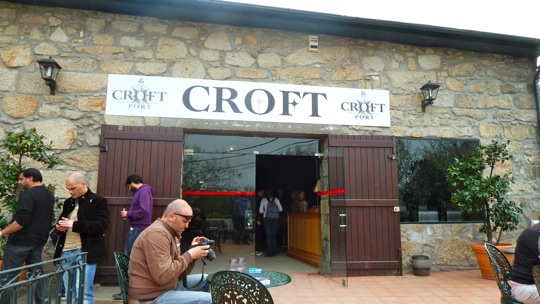
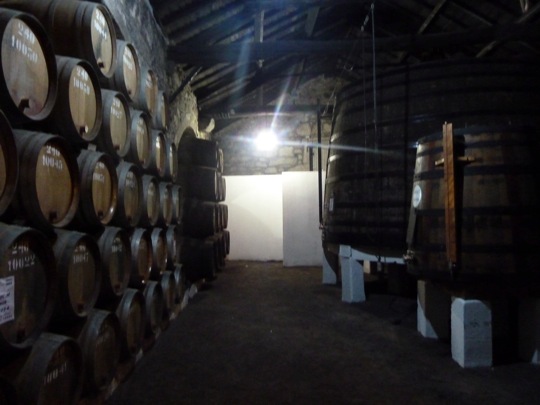
One thing you’ll notice when you get into Porto and down near the river is the random signs dotted along the bank on the other side (Gaia). These are the names of all the wineries, and you can go over and do your own cellar-crawl if you want (who’s coming back to Porto with me? :D).
Take a River Cruise along the Douro
With such a massive river defining this city and being the focal point for hundreds of years, it would only make sense to take a cruise along it. These cruises take you further up the river and back again, all the way out to where the river meets the ocean, and under the six massive bridges that span the Douro.
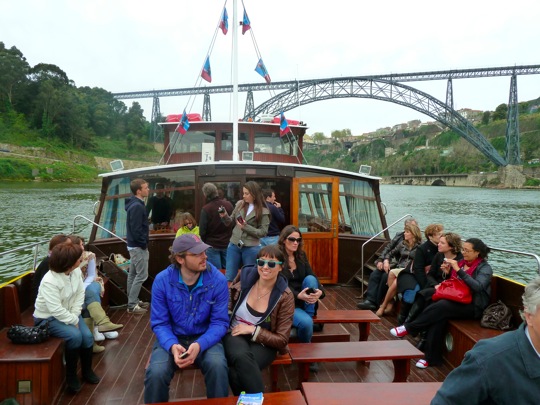
From right in the middle of the river you get a unique focal point of the riverside of Porto as well as the steep cliffs as you start to move further up the river. You also get a chance to see the boats ferrying barrels of Port wine from the vineyards far upstream to the cellars in Gaia. One hour cruises leave from along the Ribeira (river side) and cost around €10 each.
Dom LuÃs Bridge
Built by Gustaf Eiffel (the same bloke responsible for the Eiffel Tower in Paris), this bridge is by far the most iconic landmark of Porto. Spanning the river Douro from Porto itself into Gaia on the other side, the Dom Luis Bridge was opened in 1886 and was originally built to take cars on both the upper and lower decks, but this changed over the years and now the upper deck takes the Metro trams and the lower deck is for cars.
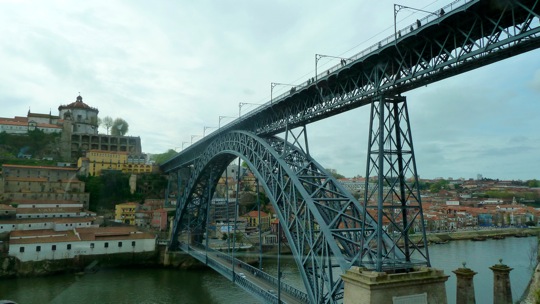
Make sure to walk right out into the centre on the upper deck, you can get some incredible photos of the riverside of Porto from up there.
Food and Drink
Portuguese food is some of the most diverse food you’ll find throughout Europe. Everything from lovingly prepared local seafood, real solid, hearty meat dishes (they love their cured pork e.g. chorizo down there) to artery clogging local fare, Porto is an intriguing mix of culinary delights.
Port Wine
Porto = Port wine. Straight up, that’s what this city is famous for. If you don’t smash down some of this sweet stuff at least ONCE while you’re there, you’ve done yourself a huge injustice. Make sure you spend a good hour or two sampling the various reds and whites on offer in Gaia.
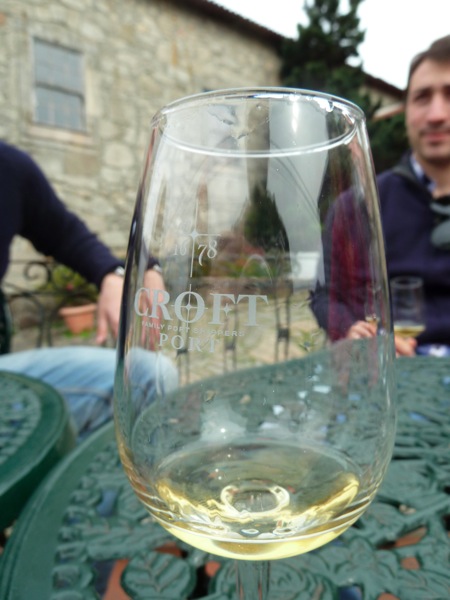
Francesinha
Basically what they’ve created here is something that would make Ronald McDonald and that KFC bloke cringe for the next 1000 years. The Francesinha (which translates into Little French Girl) is a sandwich filled with ham, some sausage and a STEAK, which is then drenched in melted cheese and the secret sauce. If that wasn’t enough, you get served up fries as well. Wow.
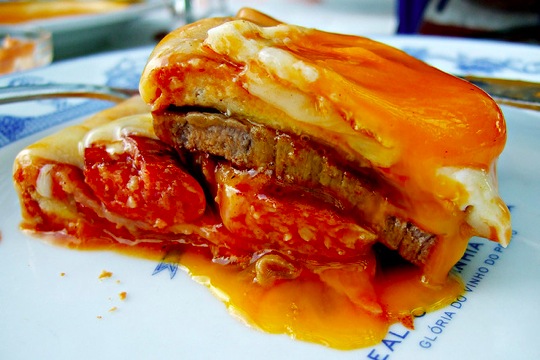
Photo by fortes
Anyone would think this came out of the USA. It seriously puts to shame anything I’ve had in an American diner. Although I didn’t get a chance to actually grab one of these (I had an amazing meal in Guimaraes on the Sunday which stopped me from downing one of these in the afternoon when we returned to Porto), I was assured that they will put all but the most lard-hardened lad straight on their arse.
Farol Da Boa Nova
We had lunch here on the Saturday, and it was really popular and busy. Situated right on the riverfront, they do a wide selection of Portuguese foods like Bacalhau and other seafood dishes, along with some great sweet stuff also. It’s right near where all the river cruises leave from on the Ribiera. Reasonably priced and a good selection of beers and wine.
How to get there
The flight down to Porto from Britain is about 2 and a half hours. You can get there on easyJet or Ryanair for a cheap flight (between £66 and £110) or TAP Portugal (the national flag carrier), which will be a bit more expensive (starting at £120), but they’re a full service airline so you’ll get some food on the way down. Prices will vary depending on when you travel.
A bit of orientation
As always, here’s a handy map laying out all the sights I mentioned above to give you an idea of the layout of Porto.
View 48 hours in Porto in a larger map
Get around in Porto
You can get around most of Porto on foot as it’s not a very spread out city centre. All the main landmarks are within a few minutes walk of each other, but because Porto is very steep, walking up and down the hills will take it out of you more than it normally would.
Porto has a comprehensive and efficient Metro system made up of huge trams like the one below that I spotted on top of Dom Luis bridge. The metro runs direct from the airport to the city centre and costs only €1,50 each way.
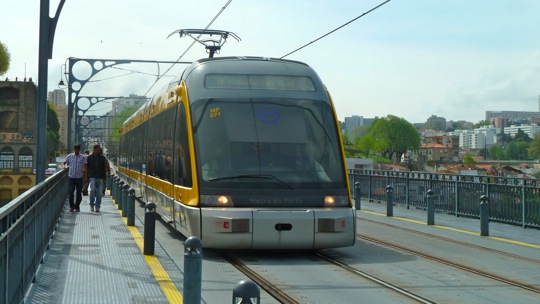
Where to Stay
I stayed at the Pousadas de Juventude (Youth Hostel) in Porto. It’s located a bit further out of town but has amazing, sweeping views of the estuary where the Douro river meets the sea. Rooms are clean, breakfast each morning is included and it has a really friendly atmosphere.
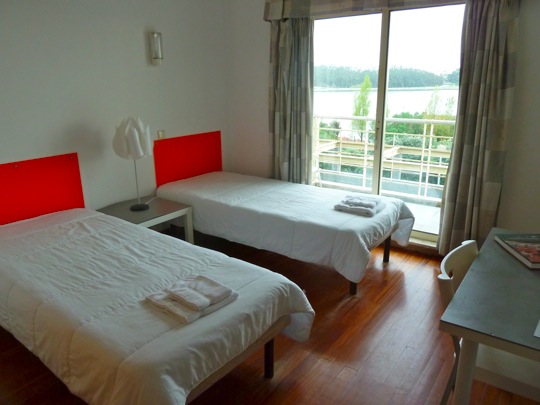
If you’d prefer accommodation closer into town, there are a number of other hostels available. Check out the Hostelbookers search on the right hand side of this page for more information and availability.
Budget
Beer is cheap in Porto. Think €3,50 for a pint of Super Bock or Sagres (the two Portuguese brews), so that trumps a lot of Europe when it comes to price. A meal won’t set you back more than €10-15 each and a night in a hostel will set you back about €20 a night.
Conclusion
I travelled to Porto with a vague idea of what to expect, having been to Lisbon before. What I found was a very laid back town, with it’s own unique character that you get a feel for pretty quickly after walking around for a few hours. The combination of the dramatic undulating old town, complete with centuries old architecture and the colourful riverside area with its red, green and yellow shopfronts makes for a very different city to Lisbon.
This was a sponsored trip thanks to Visit Portugal.